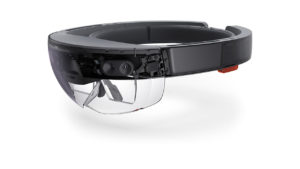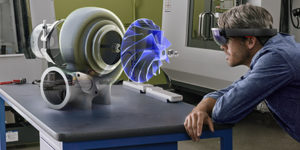Virtual reality commands the headlines, but it’s likely that “mixed reality” may actually be more interesting.

With mixed reality, instead of looking at a screen, you wear some sort of headset with glasses, but with clear lenses. Holograms are projected onto the lenses, so that these holographic images are helping you see additional information that you wouldn’t normally see.
You are still seeing the real world through the lenses, but it’s being augmented by holographic images.
Think about these scenarios…
1) You put on your mixed reality headset, and when you fix a complicated plumbing problem, a “virtual” plumber located somewhere in another city can see what you are seeing on his screen, and can help explain to you what to do by circling the next connection you need to make. You see a blue circle appear around the actual plumbing fitting. He’s augmenting your actual reality. It’s mixed reality.
2) A surgeon needs to make a very precise incision. With his mixed reality operating headset on, he’s seeing the actual patient’s skin through the clear lenses. But as he moves the scalpel towards the skin, a small red “x” graphic appears exactly where he needs to cut. It’s mixed reality.
3) A soldier wearing a mixed reality headset sees a red graphic arrow pointing at a building door. He sees the actual door through the clear lenses of his headset, but his command center is using their intelligence and connectivity to the soldier to show him exactly where the enemy is by placing a graphic arrow on the right door. It’s mixed reality.

Microsoft has built a mixed reality headset, called the HoloLens. It has the following features:
* 4 cameras
* Gyro that tracks head movement
* Microphones
* “Light engines” that create holograms on the clear lenses, for the eyes
* Light sensor
* Speakers
